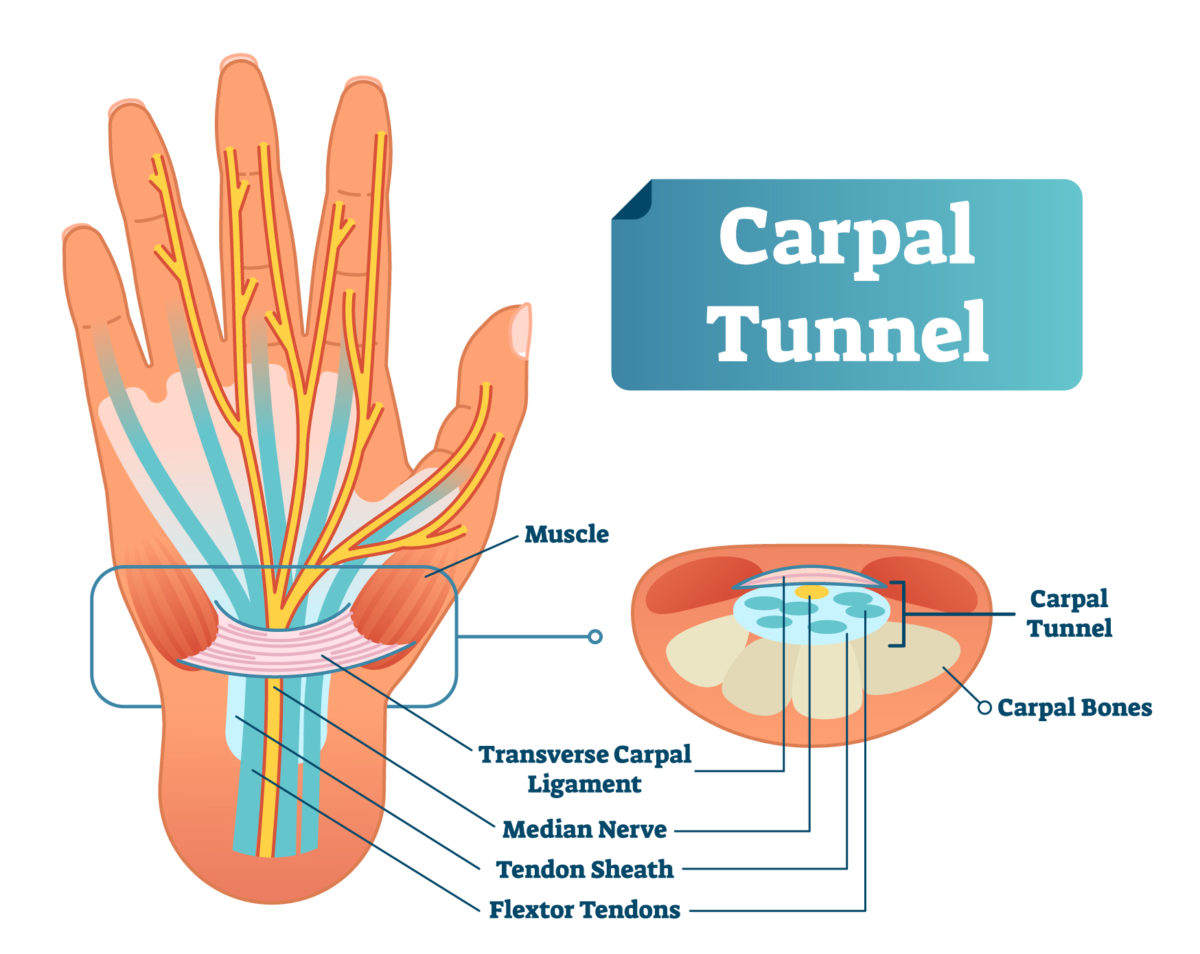The phrase “carpal tunnel syndrome” is well-known but often misunderstood. If you have been experiencing pain in your wrists and have been diagnosed with CTS, chances are you asked: What does that mean? What is the carpal tunnel? Is having a carpal tunnel bad?
Before we go any further, let’s get this straight first: You are supposed to have a carpal tunnel. You were born with it.
But it’s not supposed to hurt.
What is the Carpal Tunnel?
The carpal tunnel is literally a tunnel found in your wrists. It is a space in the wrist where nine tendons and the median nerve pass from the arm into the hand. About an inch wide, it protects the median nerve and flexor tendons that bend the fingers and thumb.
It is formed by two layers: a deep carpal arch and a superficial flexor retinaculum. The bottom and sides of this tunnel are formed by small wrist bones called carpal bones. The top, located on the palm side, is a strong band of connective tissue called the transverse carpal ligament.
The nine tendons in this area of the wrist are:
- One flexor pollicis longus
- Four tendons of flexor digitorum profundus
- Four tendons of flexor digitorum superficialis
Why Do My Wrists Hurt Sometimes?
Pain in the wrists may be caused by carpal tunnel syndrome, which occurs when there is pressure and swelling in this tunnel. Possible causes of CTS include arthritis, thyroid conditions, pregnancy, diabetes, high blood pressure, and injury.
A significant factor believed to cause or exacerbate the pain is repetitive use of the wrists, especially without taking proper precautions. Examples include participating in sports, games, or other hobbies, as well as use of a computer keyboard or tools at work.
Dr. Arora will perform ultrasound testing or order an electromyography (EMG) study to confirm the diagnosis prior to proceeding with any significant treatments.
Prevention and self-care tips may help alleviate the pain associated with this syndrome. They include using ergonomically designed furniture and equipment; using proper form and protective gear while operating tools; and wearing a wrist guard while participating in activities that strain your wrists.
In some cases, more significant remedies may be advised, such as wearing a brace on the wrists when you sleep, using oral steroid medications, or undergoing steroid injections. For persistent pain, you may elect to undergo a surgical procedure that enlarges the tunnel in order to decrease pressure.
For more information about what the carpal tunnel is, what it is comprised of, and how to alleviate wrist pain, visit the Arora Hand Surgery website or call us to make an appointment.













